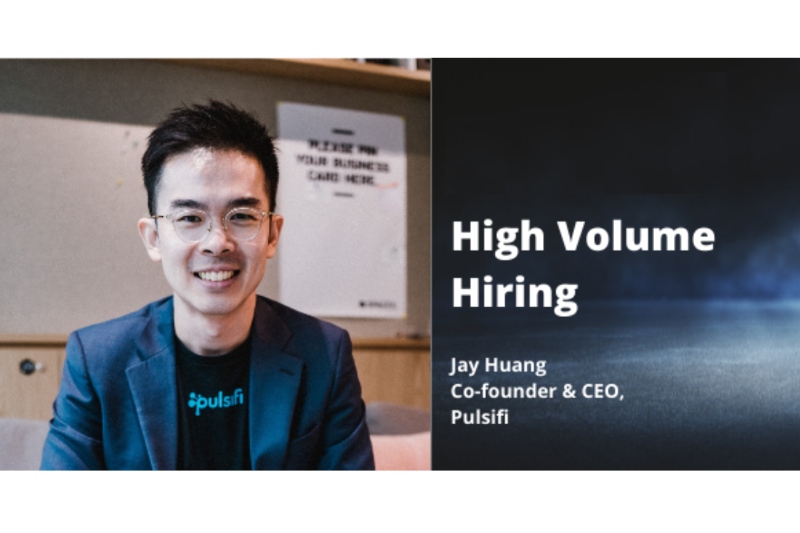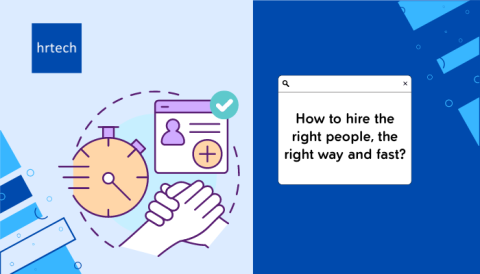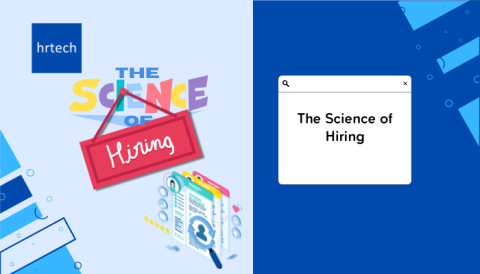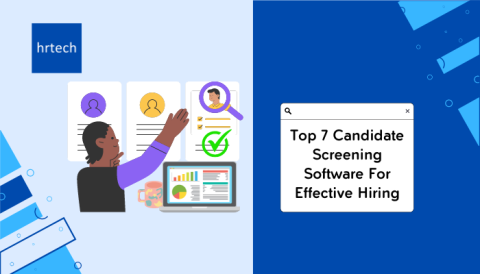Your usual manual hiring process wouldn’t be as effective when you have to process hundreds or maybe thousands of candidates at one go. Not only will the process be extremely human-intensive, but you might also miss out on important insights.

When it comes to volume hiring, many would agree the entire process is highly time-consuming. We’re talking about mass hiring of big numbers here! Your usual manual hiring process wouldn’t be as effective when you have to process hundreds or maybe thousands of candidates at one go. Not only will the process be extremely human-intensive, you might also miss out on important insights on each candidate.
As more companies are increasing their efforts in building their talent pipeline in 2021, we’d like to share some best practices on how large organizations streamline high volume hiring at each stage of their recruitment process and how data-driven solutions can help you select best-fit candidates effectively.
1. Application
The key to efficient high-volume hiring is to have a seamless job application process. This means a straightforward process on a user-friendly platform. Having a reliable applicant management system that allows you to manage the incoming bulk of applications and automate communication with candidates and parts of the selection process goes a long way.
One practice that many organizations have left behind is the need for candidates to fill up details from their resume manually from scratch – even after uploading their resume file! Consider incorporating a resume parser in your application process to scan the candidate’s resume and pre-populate the corresponding fields in their profile. That way, candidates can skip what might seem to be a repetitive step and you can instantly improve your candidate experience.
With a more sophisticated tool like Pulsifi’s People Data Platform, you will get a smart analysis of those resumes through natural language processing and semantic matching to match a candidate’s competencies to job requirements like a human would.
2. Assessment
When screening large volumes of candidates, your assessment process needs to be consistent with clear objectives laid out upfront. Good candidates won’t wait around, especially when there are many other competitors out there fighting for talent.
Another technology that could improve the speed of hiring is pre-employment talent assessments, such as cognitive and psychometric assessments. While typical assessments help you understand each person better, Pulsifi goes further, using predictive models to predict what each person will be like at work.
Through our predictive models, we predict multiple work styles highly desired by organizations, such as leadership, teamwork, communication, grit and motivation to learn. Additionally, on Pulsifi’s platform, you can customize and screen for various cognitive skills and personality traits to help you truly understand each candidate.
Check out how Pulsifi helped Nestlé select their best-fit candidates with over 90% accuracy.
Work experience and education are not the best indicators for a candidate’s fit, especially in entry-level jobs where the candidate may not have extensive work experience. Many large organizations have also removed college degree qualifications in their job requirements. Using these pre-employment assessments provide a fairer and unbiased way for selection. Rather than relying on degree qualifications or subjective measures, employers can leverage the assessments to objectively identify candidates who possess the necessary capabilities and attitude to excel in a particular role.
3. Interview
Coordinating and scheduling in-person face-to-face interviews in volume can be extremely time-consuming. This is especially true when you’ve spent all that time organizing the interviews only to find out that most of the candidates are not a close fit after speaking with them face-to-face.
You can work more efficiently if you are able to effectively narrow down the large pool of candidates to the ones with the highest possibility of converting into a hire. To do this, consider having the candidate do a pre-recorded video interview whereby they have to answer a set of questions given by you.
Through video assessments, you are able to get to know the candidate beyond their static profile such as their verbal proficiency, body language, energy, and so on. Together with other candidate data you collect, you will now be better equipped to shortlist a smaller pool of quality candidates prior to the actual face-to-face interview and cut your time-to-hire.
4. Selection
Selection is much more complex in volume hiring because it can be tricky to consistently make several hiring decisions to fill the same type of roles. There will be many candidates with comparable profiles, skills or knowledge, and usually, the selection would be based on gut feelings or personal preference.
Having a clear set of selection criteria and a comprehensive competency framework is important to help guide your selection process. Especially in a world where “the pivot is the new business model”, employers are reminded to pay attention to the less obvious capacities of a candidate such as willingness to learn, adaptability and mental agility, to name a few.
With Pulsifi, you can easily select the best-fit candidates for the role. Our platform unifies multiple hard skills and soft traits data on each candidate into a holistic profile to predict each person’s work styles, role fit, culture fit, and other outcomes.
Each profile will be assigned a fit score which predicts their suitability to specific roles, teams and cultures. This allows all hiring decisions to be unbiased and data-driven with high consistency and accuracy. Furthermore, you will be able to truly understand each candidate and make better, smarter decisions for the success of the company.
Next Steps
Experience a streamlined hiring process by letting Pulsifi do most of the heavy-lifting while providing you insights on each candidate. Book a demo with Pulsifi and elevate your talent pipeline strategy now.
Pulsifi on hrtech.sg marketplace & 2021 Singapore HRTech Marketmap
About the author:

Jay strongly believes in realizing the potential of people for organizations to succeed. He co-founded Pulsifi to help organizations truly understand their people, by bringing the power of predictive analytics and AI to the human resources profession.
Always keen to share his experience and learn from others, Jay has been a speaker at events such as HR Tech Interactive and HR Transformation Asia, and has been interviewed by publications such as HR Digital Today and Enterprise Innovation.
Before co-founding Pulsifi, Jay was Head of Strategy at CtrlShift, the regional pioneer in AI for digital marketing. As the industry that uses the most data to understand people, digital marketing provided the inspiration for starting Pulsifi.
Earlier in his career, Jay was with the Boston Consulting Group, where he worked closely with the leaders of large organizations in addressing their biggest challenges, especially people. Before that, he was in venture capital at Infocomm Investments (now SGInnovate) and Infocomm technology business development at International Enterprise Singapore (now part of Enterprise Singapore).
Jays holds an MS in Industrial Engineering and Operations Research from the University of California, Berkeley, and a BS in Electrical and Computer Engineering from Cornell University. He was a recipient of the Singapore Economic Development Board Scholarship. LinkedIn
Continue Reading: How to Accurately Hire Quality Candidates?




